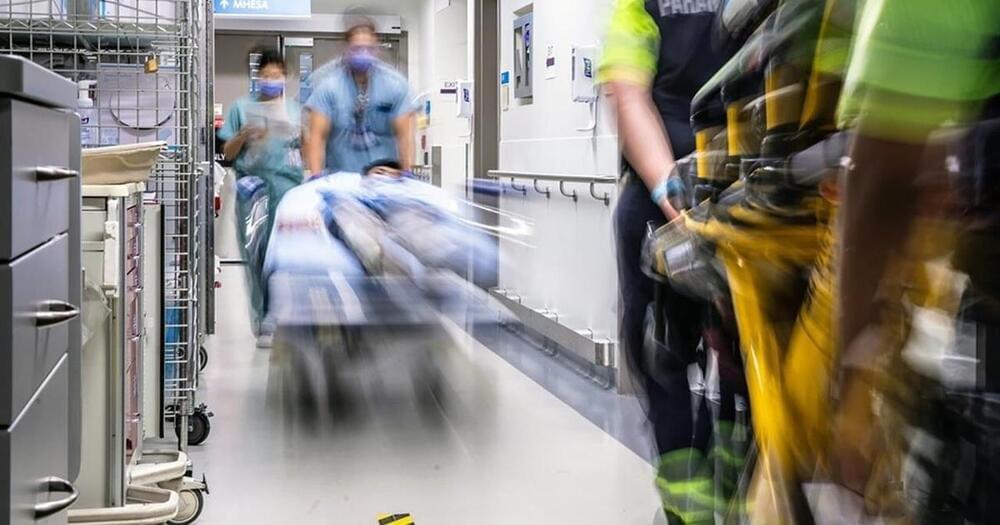Archive for the ‘biotech/medical’ category: Page 127
Sep 23, 2024
Groundbreaking Study Unveils Novel Treatment for Blocking SARS-CoV-2 Entry into Cells
Posted by Omuterema Akhahenda in categories: bioengineering, biotech/medical, chemistry, economics, health
Despite the ongoing threat posed by new viruses following the emergence of severe acute respiratory syndrome coronavirus 2 (SARS-CoV-2), which led to the coronavirus disease 2019 (COVID-19) pandemic, new antiviral drugs continue to be developed to effectively block viral entry into the human body.
Professor Kyungjae Myung and his research team in the Department of Biomedical Engineering, affiliated with the IBS Center for Genomic Integrity, has discovered UNI418, a compound that effectively prevents the penetration of the coronavirus. This compound works by regulating dielectric homeostasis, thereby inhibiting the virus’s entry into human cells.
Sep 23, 2024
E5 treatment showing improved health‐span and lifespan in old Sprague Dawley rats
Posted by John Davies in categories: biotech/medical, chemistry, life extension
In the present investigation, the SD rats were separated into two groups old control group and the treatment group (n = 8). The treatment group received four injections of E5 every alternate day for 8 days, and eight injections every alternate day for 16 days. Body weight, grip strength, cytokines, and biochemical markers were measured for more than 400 days of the study. Clinical observation, necropsy, and histology were performed. The E5 treatment exhibited great potential by showing significantly improved grip strength, remarkably decreased pro-inflammatory markers of chronic inflammation and oxidative stress, as well as biomarkers for vital organs (BUN, SGPT, SGOT, and triglycerides), and increased anti-oxidant levels. Clinical examinations, necropsies, and histopathology revealed that the animals treated with the E5 had normal cellular structure and architecture. In conclusion, this unique ‘plasma-derived exosome’ treatment (E5) alone is adequate to improve the health-span and extend the lifespan of the old SD rats significantly.
Sep 22, 2024
Penn State barred embattled professor from doing research
Posted by Dan Breeden in categories: biotech/medical, law
The Pennsylvania State University in May blocked a prominent professor at the school from doing research and making presentations on its behalf, Retraction Watch has learned.
The professor, Deborah Kelly, has faced mounting scrutiny over her work since a researcher in the United Kingdom noticed apparent data manipulation in a now-retracted article she published in 2017. Kelly earned her third retraction last week following a university probe that found “serious data integrity concerns” in another paper, as we reported at the time.
In comments she made via her legal counsel for that story, Kelly, a biomedical engineer and an expert in electron microscopy, told us:
Sep 22, 2024
AI ‘early warning’ system shows promise in preventing hospital deaths, study says
Posted by Dan Kummer in categories: biotech/medical, robotics/AI
The study, published Monday in the Canadian Medical Association Journal, found a 26 per cent reduction in non-palliative deaths among patients in St. Michael’s Hospital’s general internal medicine unit when the AI tool was used.
“We’ve seen that there is a lot of hype and excitement around artificial intelligence in medicine. We’ve also seen not as much actual deployment of these tools in real clinical environments,” said lead author Dr. Amol Verma, a general internal medicine specialist and scientist at the hospital in Toronto.
Sep 22, 2024
Research cracks the Autism Code, making the Neurodivergent Brain Visible
Posted by Natalie Chan in categories: biotech/medical, genetics, mathematics, neuroscience
Model grounded in biology reveals the tissue structures linked to the disorder. A researcher’s mathematical modeling approach for brain imaging analysis reveals links between genes, brain structure and autism.
A multi-university research team co-led by University of Virginia engineering professor Gustavo K. Rohde has developed a system that can spot genetic markers of autism in brain images with 89 to 95% accuracy.
Their findings suggest doctors may one day see, classify and treat autism and related neurological conditions with this method, without having to rely on, or wait for, behavioral cues. And that means this truly personalized medicine could result in earlier interventions.
Sep 22, 2024
13y Younger Biological Age (Blood Test #6 in 2024; Test #54 Since 2015)
Posted by Mike Lustgarten in categories: biotech/medical, life extension, media & arts

13y Younger Biological Age.
(Blood Test #6 in 2024; Test #54 Since 2015)
Continue reading “13y Younger Biological Age (Blood Test #6 in 2024; Test #54 Since 2015)” »
Sep 22, 2024
Can OpenAI’s o1 solve complex medical problems?
Posted by Kelvin Dafiaghor in categories: biotech/medical, robotics/AI

First thoughts and preliminary insights into OpenAI’s GPT o1 Strawberry in the medical domain, with some expected and unexpected findings. We have a \.
Sep 21, 2024
Increased hyaluronan by naked mole-rat Has2 improves healthspan in mice
Posted by Quinn Sena in category: biotech/medical
Year 2023 face_with_colon_three
Mice overexpressing Has2 from the naked mole-rat showed an increase in hyaluronan levels in several tissues, and a lower incidence of spontaneous and induced cancer, attenuated inflammation through several pathways, extended lifespan and improved healthspan.
Sep 21, 2024
Fighting Cancer From Within: GUMC Spotlights Efforts to Reprogram Immune System to Slow Tumor Growth
Posted by Paul Battista in category: biotech/medical
A Sept. 17 Georgetown University Medical Center (GUMC) seminar highlighted research on a revolutionary approach to cancer treatment: utilizing the body’s natural immune system to combat tumor growth rather than directly targeting cancer cells.
Alejandro Villagra, an associate professor in the department of oncology at the Georgetown University School of Medicine (GUSOM), shared his research in a talk hosted by the department of microbiology and immunology. The lecture focused on Villagra’s research on the manipulation of macrophages, a type of white blood cell active in the immune system, to combat the growth of cancerous tumors.
“Some people assume cancer research is about killing cancer directly,” Villagra told The Hoya. “We are focusing on the mechanisms we already have in order to kill cancer. So, these treatments, rather than the normal conception of killing the tumor, helps galvanize the immune system to indirectly kill cancer.”















